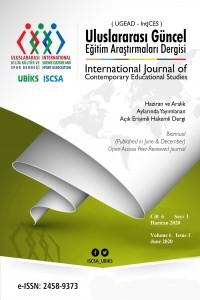Making Meaning and Not Just Sounds in Reading
student; teacher; language
___
- Arizona Department of Education, Bilingual Unit, (1990), Strategies for Teaching Limited English Proficient Students
- Banković, I., Sociocultural theory and Second Language Acquisition.
- Barnes, D. (1992) The Role of Talk in Learning. In: Norman, K. (Ed.) Thinking Voices. London: Hodder and Stoughton.
- Brown, G.A. and Wragg, E.C., 2003. Questioning in the Secondary School. Routledge.
- Ericsson, K. A. (2002) Protocol Analysis and Verbal Reports on Thinking [online]. Available at: http://www.psy.fsu.edu/faculty/ericsson/ericsson.proto.thnk.html [accessed April 2017].
- Gardner, R.C. and Lambert, W.E., 1972. Attitudes and Motivation in Second-Language Learning.
- Koschmann, T. (1999) Towards a Dialogic Theory of Learning: Bakhtin's Contribution to Understanding Learning in Settings of Collaboration. In: CSCL Proceedings of the 1999 Conference on Computer Support for Collaborative Learning. Article No. 38. International Society of the Learning Sciences. Available at: http://www.gerrystahl.net/proceedings/cscl1999/A38/A38.HTM [accessed March 2017].
- Maslow, A. (1943) A Theory of Human Motivation. Psychological Review 50(4): 370-396. Available at:hhtp://ovidsp.tx.ovid.com/sp3.12.0b/ovidweb.cgi?&S=BJPNFPMKAFDDFJLMNCMKJBIBCGDOAA00&PDFLink=B% 7cS.sh.22.23.26.29%7c2&WebLinkReturn=TOC%3dS.sh.22.23.26.29%7c2%7c%26FORMAT%3dtoc%26FIELDS%3dTOC [accessed 7 May 2017].
- Paris, S.G. and Hamilton, E.E., 2009. The development of children’s reading comprehension. Handbook of research on reading comprehension, 1, pp.32-53.
- Perkins, D. (1997) What Is Understanding? In: Wiske, M. S. (Ed.) Teaching for Understanding: Linking Research with Practice. San Francisco, CA: Jossey-Bass.
- Piaget, J., 2013. The construction of reality in the child (Vol. 82). Routledge.
- Scott, D. and Usher, R. (2010) Researching Education : Data, Methods and Theory in Educational Enquiry [online]. 2nd ed. London: Continuum International Publishing. Available at: http://site.ebrary.com/lib/uon/detail. action?docID=10438515 [accessed April 2017].
- Swann, J. (1994) Observing and Recording Talk in Educational Settings. In: Graddol, D., Maybin, J. and Stierer, B. (eds.) Researching Language and Literacy in Social Context. Clevedon: Open University Press.
- Watts-Taffe, S. and Truscott, D.M., 2000. Focus on research: Using what we know about language and literacy development for ESL students in the mainstream classroom. Language Arts, 77(3), pp.258-265.
- Wiske, M.S. (1997). Teaching for Understanding: Linking Research with Practice. San Francisco, Jossey-Bass Publisher
- Wood, D. (1988) How Children Think and Learn. Oxford: Blackwell. www.IBO.org [Accessed April 2017]
- Zolt´n Dörnyei (1998). Motivation in second and foreign language learning. Language Teaching, 31, pp 117135- doi:10.1017/S026144480001315X
- Başlangıç: 2015
- Yayıncı: Uluslararası Bilim Kültür ve Spor Derneği (UBİKS)
Sıcak Ortamda Egzersiz ve Sportif Performans
Halit EGESOY, Ayşegül YAPICI, Ahmet ALPTEKİN
Sınıf Öğretmeni Adaylarının Fatih Projesine Yönelik Görüşleri: Farkındalık, Öngörü ve Beklentiler
Adem KORKMAZ, Tarık TALAN, Selma BÜYÜKGÖZE
İşitme Engelli Elit Sporcularda Yaşam Kalitesi
